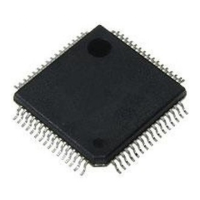Introduction
1-2 Copyright © 2005-2008 ARM Limited. All rights reserved. ARM DDI 0337G
Non-Confidential
Unrestricted Access
1.1 About the processor
The processor is a low-power processor that features low gate count, low interrupt
latency, and low-cost debug. It is intended for deeply embedded applications that
require fast interrupt response features. The processor implements the ARMv7-M
architecture.
The processor incorporates:
• Processor core. A low gate count core, with low latency interrupt processing that
features:
— A Thumb instruction set subset, defined in the ARMv7-M Architecture
Reference Manual.
—Banked Stack Pointer (SP) only.
— Hardware divide instructions, SDIV and UDIV (Thumb 32-bit
instructions).
— Handler and Thread modes.
— Thumb and Debug states.
— Interruptible-continued LDM/STM, PUSH/POP for low interrupt latency.
— Automatic processor state saving and restoration for low latency Interrupt
Service Routine (ISR) entry and exit.
— Support for ARMv6 BE8 or LE accesses.
— Support for ARMv6 unaligned accesses.
• Nested Vectored Interrupt Controller (NVIC) closely integrated with the
processor core to achieve low latency interrupt processing. Features include:
— External interrupts of 1 to 240 configurable size.
— Bits of priority of 3 to 8 configurable size.
— Dynamic reprioritization of interrupts.
— Priority grouping. This enables selection of pre-empting interrupt levels
and non pre-empting interrupt levels.
— Support for tail-chaining and late arrival of interrupts. This enables
back-to-back interrupt processing without the overhead of state saving and
restoration between interrupts.
— Processor state automatically saved on interrupt entry, and restored on
interrupt exit, with no instruction overhead.
• Memory Protection Unit (MPU). An optional MPU for memory protection:
— Eight memory regions.

